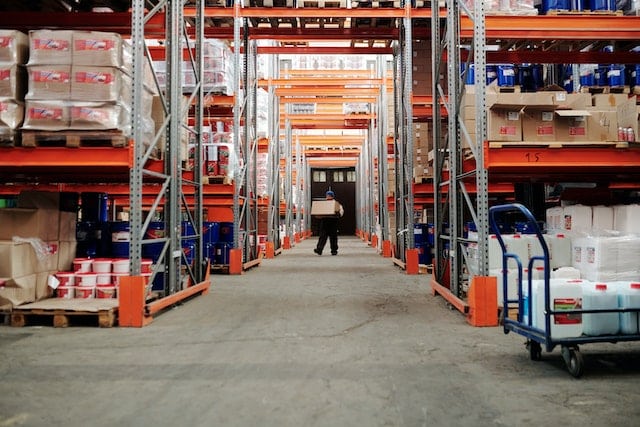Streamlining Store Operations with a Data-Driven Approach

Considering brick-and-mortar retail industry’s current, tumultuous state in the midst of digital transformation, retailers big and small are scrambling to reprioritize the importance of their facilities data. Retailers that want to stand out amongst stiff competition need to understand that sourcing, compiling, analyzing, and creating actionable insights around their stores is central to improving the customer experience and streamlining operations.
A well-maintained, highly-functioning retail environment underlies every other element of a store’s success: If your stores fail to keep up with your brand’s baseline standards in quality and appearance, your customers will quickly turn elsewhere.

For some retailers such as Wal-Mart and Nike, converting data into insights through advanced analytics is almost second nature. In many other cases, however, advanced data analysis can exceed the bandwidth of retail operations and facilities management teams, already stretched thin with the cyclical demands of inventory control, store maintenance, and brand uptime. What does exist is rudimentary: Supply chain and inventory reports, perhaps a general sense of store traffic. As a result, data is ubiquitous, yet insights are underdeveloped.
In this blog post, we determine the key operational elements that drive customer retention within a retail environment. We also provide several strategies with which to leverage facilities data – both to improve day-to-day operations and to keep maintenance costs within budget. Finally, we outline the steps to achieve a proactive, unified approach to store operations that is easily scaled across organizations of all sizes.
The Importance of Efficient Retail Operations
Bad retail experiences are detrimental to the health of a brand. A poorly operated store will create a chain reaction that funnels through your entire business. The costs of a broken POS system or failing HVAC unit may seem insignificant at first, but they can actually be monumental – hundreds of customers could pass through one of your stores on any given day. Additionally, now that omnichannel retailing is almost de facto, your stores serve as showrooms of your brand experience. Creating a positive experience boosts your digital operations, which is good for both your top and bottom lines.
But if a major system fails during the course of this 24-hour period and creates an inconvenient, frustrating experience – such as a long wait in the check-out line or an uncomfortable, overheated environment – your customer is far less likely to make a purchase, and even less likely to return to your store in the future. This translates into a whole lot of lost revenue.
According to our recent State of Brick & Mortar Retail Report, 69% of customers are more likely to shop at a competitor if they encounter an inconsistent or negative in-store experience. Another study conducted by VisionCritical estimated the overall impact of bad customer experiences to be upwards of $537 billion.
Move to a Proactive Operational Workflow
Many retail businesses are dealing with complex systems and enormous amounts of information: They have multiple stores in different locations, perhaps providing different types of goods or services at each. Beyond the retail storefronts, there are also warehouses, distribution centers, and corporate offices to keep track of. Each building varies in age (with differing maintenance demands), caters to a different type of “user,” and has unique demands, systems, and workflows to contend with.
Stores that aren’t equipped with a centralized data source to handle store operations, therefore, are often bogged down with the responsibility of submitting work orders, sourcing reliable contractors, fulfilling invoices, and generally working on a reactive basis. They act only when something breaks. When a unified platform comes into play, data can instead be leveraged on a proactive basis to keep stores maintained and functional, giving employees more time to focus on their customers.
The verdict is clear. Outdated, manual systems no longer suffice in the age of digital transformation: An omnichannel shopping experience demands an omnichannel operations management system. Ditch the spreadsheets and move to an integrated Service Automation platform to harness your facilities data for actionable insights. Only then will you be able to move into a proactive phase of operations, during which routine needs or problems are anticipated and addressed before you even know they exist.
A recent article published by the National Retail Federation points out some of the measurable results brought about by a centralized facilities management platform for luxury retailer Louis Vuitton:
“Since using ServiceChannel to manage its vendor management, Louis Vuitton has reduced daily time store managers must spend resolving issues by 96 percent. The automation of invoices and payments has also saved time on the backend by reducing the account payable department’s load by more than 4,000 invoices and 41 work days.”
When deciding on a facilities management platform, make sure to inform key stakeholders and find out their individual priorities when it comes to streamlining store operations. Is it reduced energy consumption? Better inventory control? A high-tech physical interface in every storefront? Use these questions to navigate the decision-making process, keeping a prioritized list of KPIs on hand for guidance.
Harnessing Facilities Data
Once a centralized facilities management solution has been implemented, businesses can begin to compile data and deploy technology for a smarter approach to operations. Start by measuring sales data to detect trends in customer foot traffic on a daily, weekly, monthly, and seasonal basis. This will help you understand when facilities will be most heavily utilized and, therefore, when they’ll need the most attention to needs such as after-hours cleaning, inventory restocking, and customer assistance. Knowing cyclical store patterns – such as a 200% increase in traffic around the holiday season – will allow managers to hire sufficient staff ahead of time, preventing interruptions in service.

Next, use facilities data to improve the work order management process: Analyze work order data for patterns in repair vs. replacement costs, demand for upkeep, and frequency of reports at various store locations. Predictive analytics, when employed properly, allow FM professionals to schedule preventive maintenance or replace an asset before it fails. Better yet, automate your work order management by leveraging AI and machine learning to approve work orders and manage costs based on historical trends. Making these kinds of data-backed decisions about asset maintenance will dramatically reduce retail operations costs, freeing up resources to devote to innovative customer experiences.
Finally, wherever possible, install IoT-enabled sensors to automatically report on information such as climate control and building security systems. From here, you can create systematic performance benchmarks and be instantly alerted with an “abnormal” result is recorded, triggering a message to that store’s manager or facilities director. Not only will this improve upon occupant experience, but it will also make it easier to keep track of potential threats and plan accordingly.
Key Takeaways
Retail facilities produce and consume massive amounts of data on a daily basis. Until recently, many retail businesses have either underutilized this data or ignored it altogether. Now that digital transformation is rapidly underway across the entire industry, retail business leaders must make concerted efforts to reprioritize facilities upkeep in order to prevent outages and store downtime.
Customers are increasingly demanding when it comes to consistency across brand experiences, whether those experiences take place online or in-person – therefore, it’s critical to ensure that their in-store experience aligns with impressions that take place in other channels.
Knowing that customer experience and in-store impressions are heavily based on the most basic performance aspects of your stores (such as cleanliness, lighting, organization, sufficient inventory, etc.), retail executives must look to a centralized facilities management platform to monitor store data and move to a proactive, rather than reactive, operational workflow. Tracking seasonal patterns, trends, and fluctuations across your retail facilities are a given.
Stay two steps ahead of the game by analyzing these patterns and automating your asset maintenance, inventory control, and employee scheduling accordingly. In doing so, you’ll notice that not only are your day-to-day operations greatly improved, but that the entire customer journey will flow seamlessly from one channel to another.



